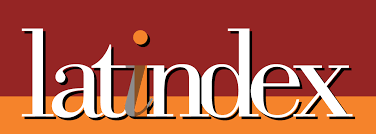Cephalometric changes of the airway in patients with glossectomy. Case report
DOI:
https://doi.org/10.60094/RID.20230202-34Keywords:
Macroglossia, glossectomy, airwaysAbstract
The upper airways (UA) are made up of the nasopharynx, oropharynx and hypopharynx, being structures that can suffer obstructions due to changes in the shape, size and position of the jaw, tongue and hyoid, affecting the growth and development of the airway. facial. Macroglossia is a pathology characterized by transverse and sagittal tissue overgrowth of the tongue, causing dento-skeletal anomalies, functional deficiencies and obstruction of the UA. In this context, the assessment of tongue size should include clinical, radiographic and functional data. Below is a clinical case of a skeletal class II patient with macroglossia treated in the postgraduate course in Dentofacial Orthopedics and Orthodontics at the University of Carabobo; The clinical studies and the cephalometric changes in the UA observed in the lateral cephalic radiograph before and after partial glossectomy are described, using the McNamara and Linder-Aronson analyzes that indicate pharyngeal diameter and the Rakosi analysis that indicates the position of the tongue in the cavity. mouth at the beginning of treatment. Studies carried out after 18 months of treatment show improvement in UA patency and occlusion.
Downloads
References
Espada M, Soldevilla L y Mattos M. Posición hioidea, posición lingual y dimensión de la vía aérea faríngea según maloclusión esquelética. Odontoest. 2021;23(38):305. DOI: https://doi.org/10.22592/ode2021n37e305
Saldarriaga J, Álvarez E, Botero P. Tratamientos para la maloclusión Clase II esquelética combinada. Rev. CES Odont. 2013;26(2):145-59. DOI: https://doi.org/10.21615/cesodon
Xiang M, Hu B, Liu Y, Sun J, Song J. Changes in airway dimensions following functional appliances in growing patients with skeletal class II malocclusion: a systematic review and meta-analysis. Int J Pediatr Otorhinolaryngol 2017;97:170e80. DOI: https://doi.org/10.1016/j.ijporl.2017.04.009
Iwasaki T, Suga H, Minami A, Sato H, Hashiguchi M, Tsujii T. Relationships among tongue volume, hyoid position, airway volume and maxillofacial form in paediatric patients with Class-I, Class-II and Class-III malocclusions. Orthod Craniofac. 2019;22(1):9-15. DOI: https://doi.org/10.1111/ocr.12251.
Quevedo M, Hernández A, Zambrano E, Domingos V. Evaluación de las vías aéreas superiores a través de trazados cefalométricos. Rev Odontol Univ Cid São Paulo 2017;29(3):276-88. DOI: https://doi.org/10.26843/ro_unicidv2932017p276-288
Vilella B de S, Vilella O de V, Koch HA. Growth of the nasopharynx and adenoidal development in Brazilian subjects. Braz Oral Res. 2006;20(1):70–5. DOI: http://dx.doi.org/10.1590/s1806-83242006000100013
Núñez P, García C, Morán V y Jasso L. Macroglosia congénita: características clínicas y estrategias de tratamiento en la edad pediátrica. Bol Med Hosp Infant Mex. 2016;73(3):212-216. DOI: https://doi.org/10.1016/j.bmhimx.2016.03.003
Prada C, Zarate Y, Hopkin R. Genetic causes of macroglossia: diagnostic approach. Pediatrics. 2012;129(2):e431-7. DOI: https://doi.org/10.1542/peds.2011-1732
Herrera A, Herrera F, Díaz A, y Fang L. Glosectomía parcial. Una técnica quirúrgica para tratamiento de macroglosia. Ciencia y Salud Virtual (CSV) 2013;5(1):118–23. DOI: https://doi.org/10.22519/21455333.328
Kulshrestha R, Tandon R, Singh K, Chandra P. Analysis of pharyngeal airway space and tongue position in individuals with different body types and facial patterns: A cephalometric study. J Indian Orthod Soc. 2015;49:139-44. DOI: https://doi.org/10.4103/0301-5742.165555
Rakosi T. An atlas and manual of cephalometric radiography. London, Wolf Medical Publica on Limited, 1978;96-8.
Ansar J, Maheshwari S, Verma S, Singh R, Agarwal D, Bhattacharya P. Soft tissue airway dimensions and craniocervical posture in subjects with different growth patterns. Angle Orthod. 2015;85(4):604-10. DOI: https://doi.org/10.2319/042314-299.1
Harada, K, Enomoto SA new method of tongue reduction for macroglossia. J. Oral Maxillofac. Surg. 1995;53:91-2. DOI: https://doi.org/10.1016/0278-2391(95)90513-8
Murphey AW, Kandl JA, Nguyen SA, Weber AC, Gillespie MB. The effect of glossectomy for obstructive sleep apnea: a systematic review and meta-analysis. Otolaryngol Head Neck Surg. 2015;153(3):334-342. DOI: https://doi.org/1010.1177/0194599815594347
Balaji S.M. Reduction glossectomy for large tongues. Ann Maxillofac Surg. 2013;3(2):167-72. DOI: https://doi.org/10.4103/2231-0746.119230
Published
How to Cite
Issue
Section
License
Copyright (c) 2024 Berlian Alejandra Bello-Medina, Glenda Josefina Falótico-de Farías, Belkis Dommar-Pérez, Ambar Zalnieriunas-Montero

This work is licensed under a Creative Commons Attribution 4.0 International License.
This work is licensed under a Creative Commons Attribution 4.0 International License.
AUTHORS RETAIN THEIR RIGHTS:
You are free to:
- Share: copy and redistribute the material in any medium or format for any purpose, including commercially.
Adapt: remix, transform and build upon the material for any purpose, including commercially.
The licensor cannot revoke these freedoms as long as you follow the terms of the license under the following terms:
- Attribution : you must give proper credit , provide a link to the license, and indicate if changes have been made. You may do so in any reasonable manner, but not in such a way as to suggest that you or your use is supported by the licensor.
- No additional restrictions: you may not apply legal terms or technological measures that legally restrict others from making any use permitted by the license.











